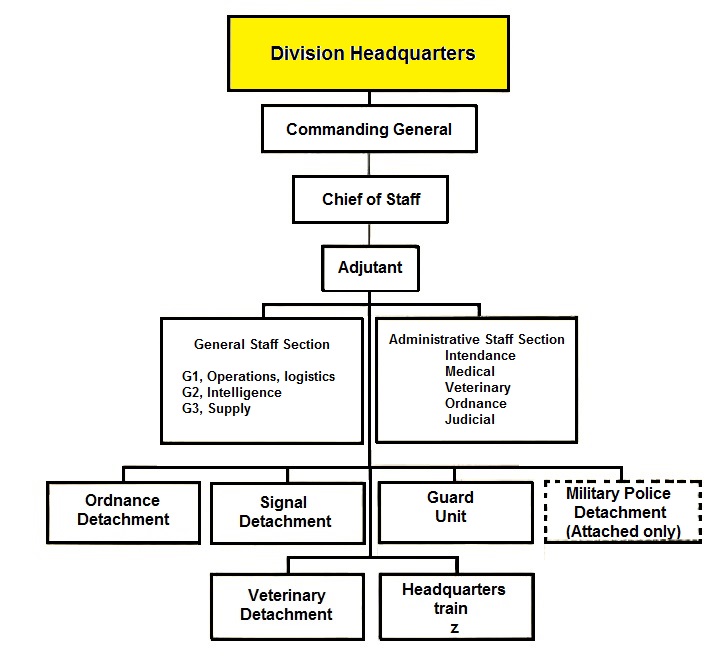CHAPTER 3 - WWII JAPANESE FIELD ORGANIZATIONS - SECTION 1

SECTION I - MAJOR ORGANIZATIONS
Note. In some cases in this chapter, sufficiently definite and comprehensive infomation has not been available to enable representatives of the participating headquarters to reach fullt agreed figures. Therefore, although the main structure of the Japanese organization is considered to be well established, some of the details are likely to need amendment in the light of future experience.
1. FIELD COMMAND.
The Japanese Army in the field is organized into groups of armies, area armies, armies, and forces with special missions which initially do not come under command of any army. The Chief of Staff of the Japanese Army is responsible for the general direction of the army forces in the field.
2. GROUPS OF ARMIES.
A group of armies, such as the Kwantung Army, might be considered the equivalent of the command of theater of operations.
3. AREA ARMIES.
An area army, such as the 8th Area Army, may be considered the equivalent of an American or British army.
4. ARMIES.
A Japanese army shuold be considered the equivalent of an American or British Corps. It is composed of a headquarters, a variable number of infantry divisions, and army troops. Such a force normally comprises from 50,000 to 150,000 officers and enlisted men, The 18th Army in the Southwest Pacific area during April 1943 had a nominal strebgth of about 130,000, but its actual strength was always greatly below this figure because of attrition enrouite, casualties, and detachments. It includes the following units:
| 3 | Divisions - plus small elements of a fourth. | 3 | Independent motor transport battalions. | |
| 1 | Independent mixed brigade. | 6 | Independent motor transport companies. | |
| 2 | Infantry mortar battalions. | 1 | Signal unit. | |
| 4 | Independent field antiaircraft artillery companies. | 2 | Fixed radio units. | |
| 6 | Indeoendent field searchlight companies. | 5 | Line of communication hospitals. | |
| 6 | Field antiaircraft artillery battalions. | 1 | Water purifying unit. | |
| 2 | Field machine cannon companies. | 2 | Debarkation units. | |
| 1 | Independent antitank gun battalion. | 2 | Anchorages. | |
| 1 | Engineer group. | 2 | Construction duty companies. | |
| 7 | Independent engineer regiments. | 3 | Land duty companies. | |
| 1 | Independent engineer company. | 5 | Sea duty companies. | |
| 2 | Field road construction units. | 1 | Water transport unit. | |
| 1 | Field airfield construction unit. | 5 | Airfield battalions. | |
| 3 | Field duty units. | 3 | Airfield companies. | |
| 3 | Shipping engineer regiments. | 2 | Base forces (Naval troops). | |
| 1 | Field motor transport depot. | 1 | Field freight depot. | |
| 2 | Field transport commands. | 1 | Field ordnance depot. | |
| 1 | Independent transport regiment. | 4 | Line-of-communication garrison (sector). |
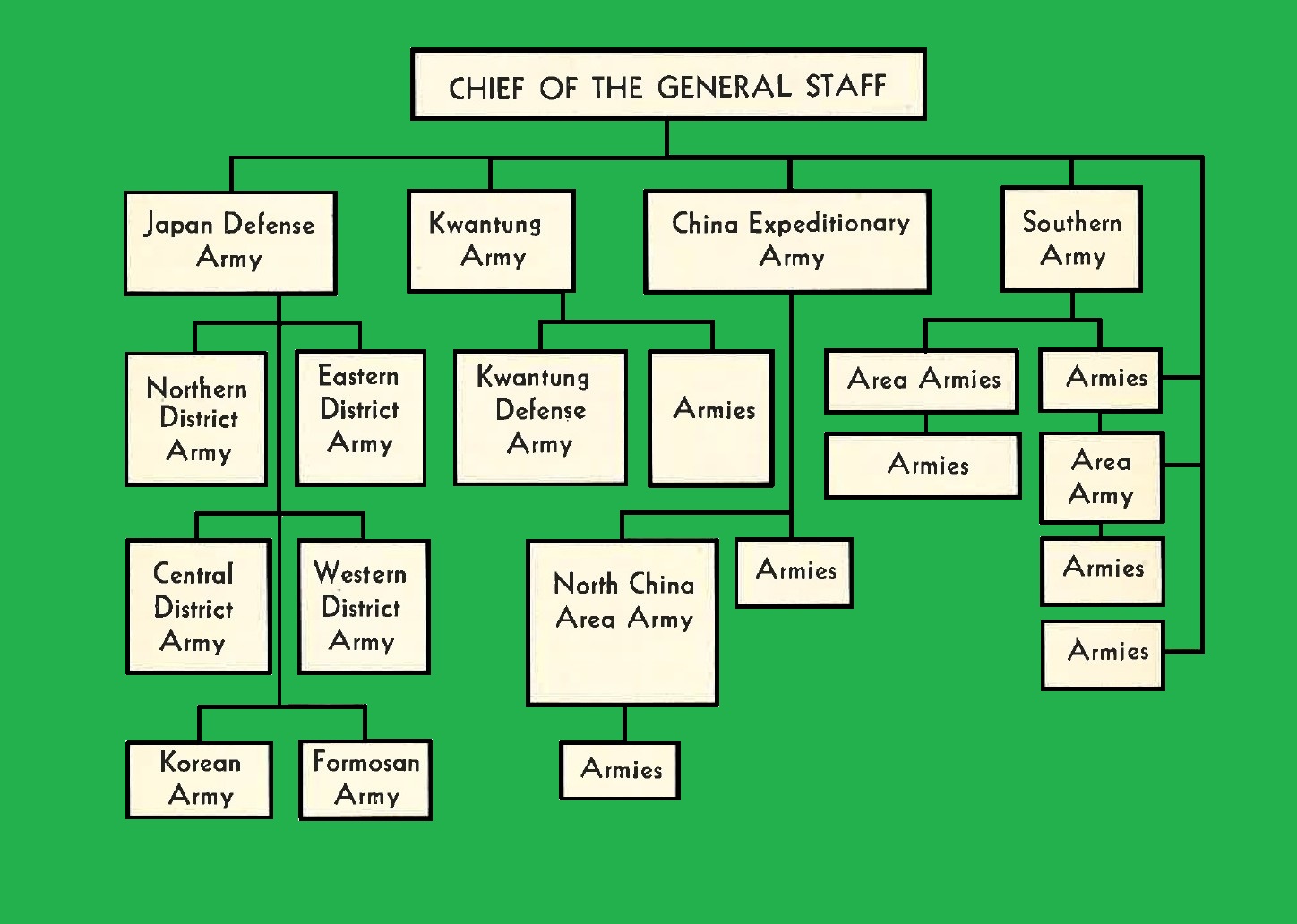
Figure 8. WWII Japanese Field Command Organizational chart. |
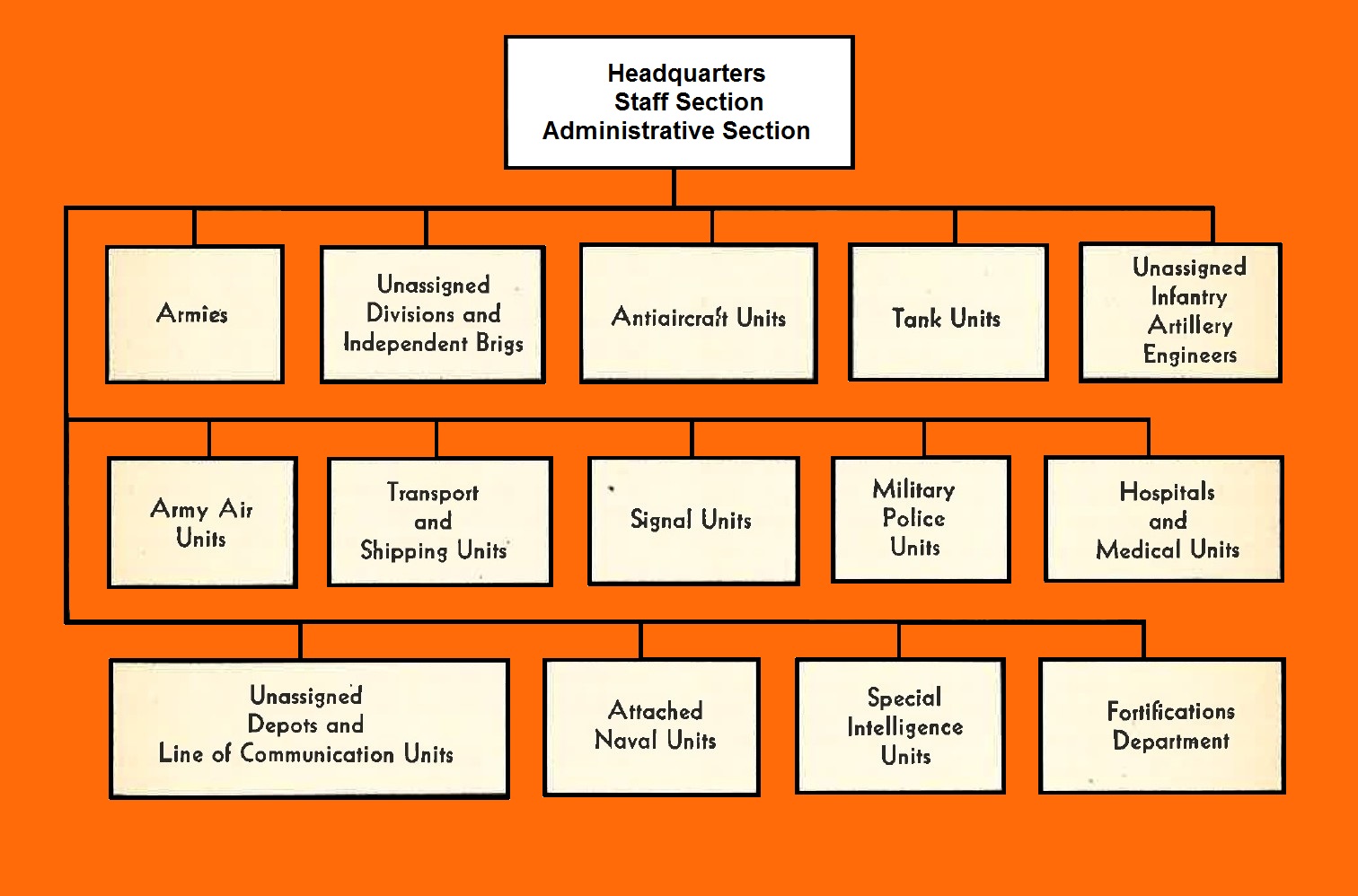
Figure 9. WWII Japanese Staff Administration Organizational chart. |
5. ARMY CORPS.
Japanese militay terminology does not include the term army corps (see par. 4).
6. INFANTRY DIVISION.
a. General
In its basic form the Japanese infantry division is composed as follows:
- Division headquarters.
- Division signal unit.
- Infantry group headquarters and 3 infantry regiments.
- Artillery regiment.
- Cavalry regiment or reconnaissance regiment.
- Engineer regiment.
- Medical unit.
- Field hospitals.
- Water-purification unit.
- Transport regiment.
- Ordnance unit.
- Veterinary unit.
b. Classification and strength.
Organic units of the Japanese division exhibit various differences in organization and strength, because they are organized for different roles and varying types of terrain. The Japanese themselves classify these organic units into three general categories:
A - or the strongest
B - representing the standard
C - the special
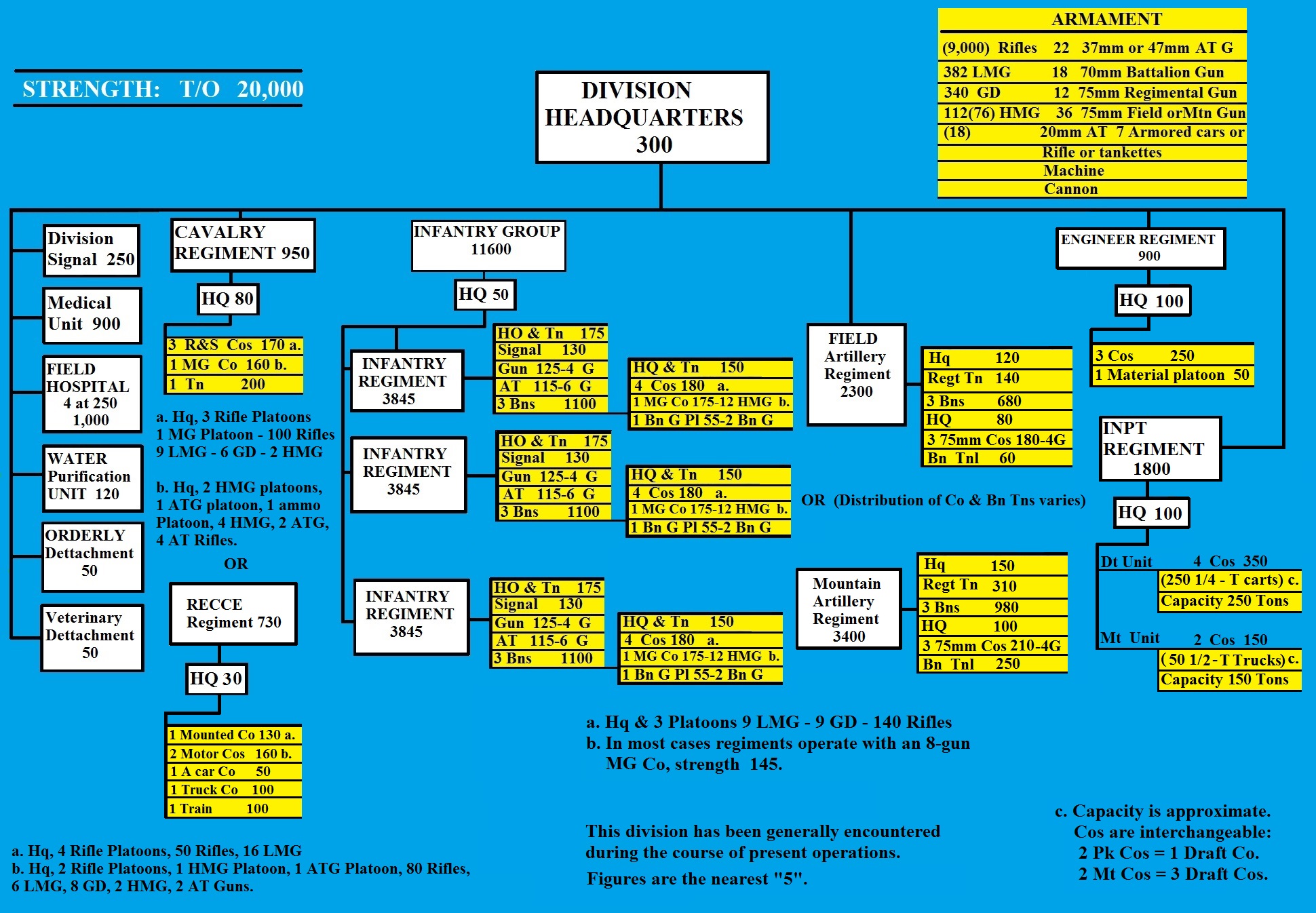
Figure 10. WWII Japanese "standard" triangular infantry division Chart.
|
Consequently the strength and classification of their divisions are largely dependant upon organization of their organic units. However, this
does not constitute a hard-and-fast rule whereby all Japanese divisions are composed exclusively of any one type of units. For example, a
basically standard, or "B" type, division often may have "A" type artillery. In addition, there are also strength differences within the
division units themselves. in an "A" type infantry regiment, the regimental infantry gun unit could be either one company of four guns or two
companies of four guns under a small battalion headquarters. In general, however, all Japanese divisions come within the following classifications:
(1) The standard division. This type of division has been encountered most frequently in present (1944) operational areas. It is composed of organic elements listed in paragraphs above. (2) The strengthened division. This division is composed of "A" type units (augmented personnel and firepower) and may include an artillery group, consisting of a group headquarters, a field or mountain artillery regiment, and other artillery units; an organic tank unit; and a chemical or decontamination unitfor gas control. This type of division so far has not been encountered in its entirety in the field. (3) The strengthened division (modified). Elements of this type of division were known to exist during the early stages of the war, and the division may have been a fore-runner of strengthened type described above. It includes an artillery group, but has no organic tank element or gas decontamination unit. The infantry rifle companies are found without the heavy weapon platoons of the strengthened type division, decreasing the rifle company strength from 262 to 205. In such case the heavy machine guns and antitank rifles are found in the machine gun and antitank companies. (4) The special division. This is a lighter type of division composed of two brigades, each of four independent infantry battalions supported by small units of auxiliary troops (mainly "C" type units). The future operational role of this type of division is difficult to forecast, but to date it has been found employed in garrison and antiguerilla activities in China. c. Charts and tables. The following charts and tables depict the organization of the four types of infantry divisions listed above. However, in view of the many possible combinations of types of units within a division, these charts and tables cannot be taken as exact models for all divisions. Following the charts and tables are presented detailed analyses of organization and strength. Where known, variants are included. Emphasis has been placed, however, upon the standard division. |
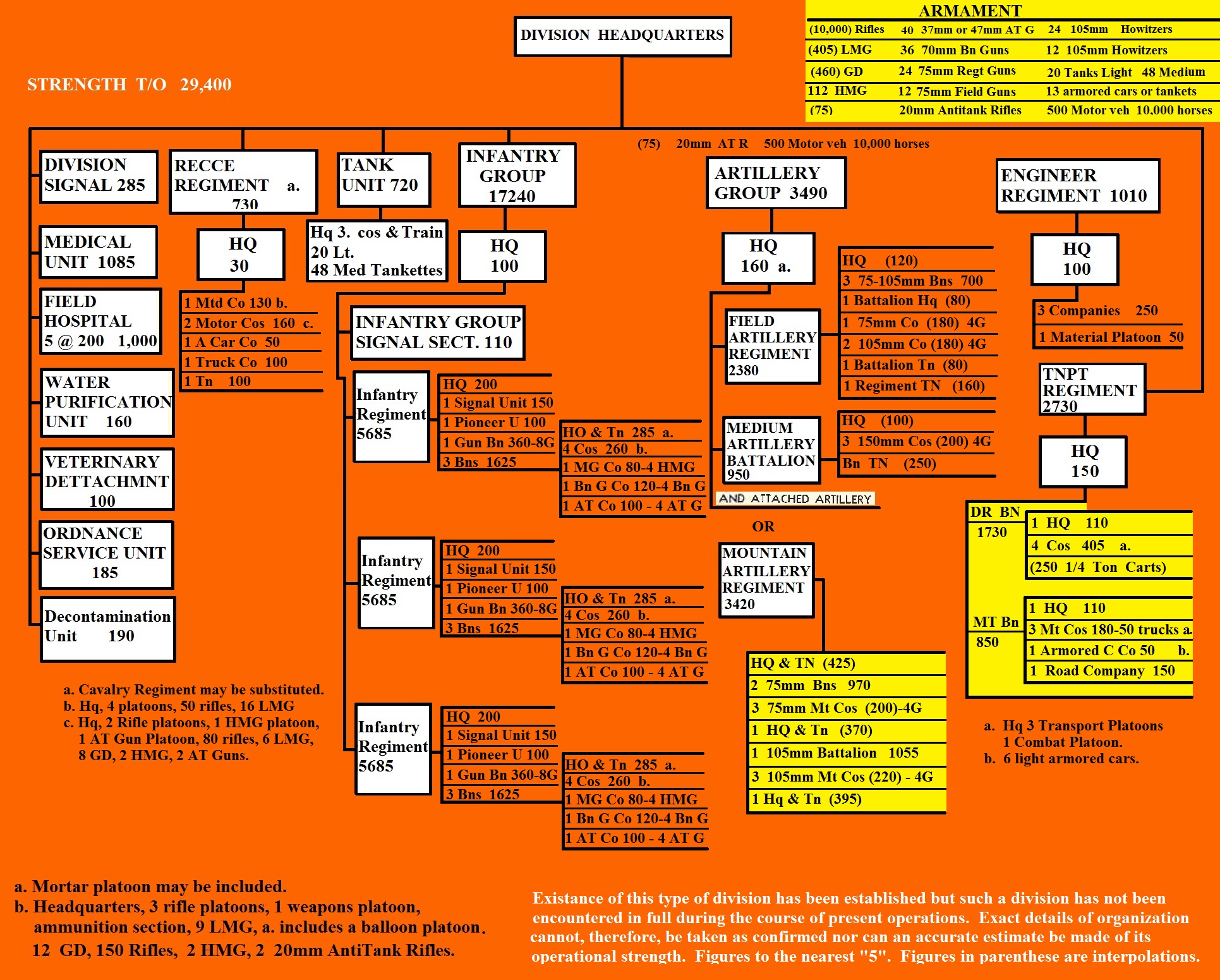
Figure 11. WWII Japanese "strengthened" triangular infantry division chart. |
| |
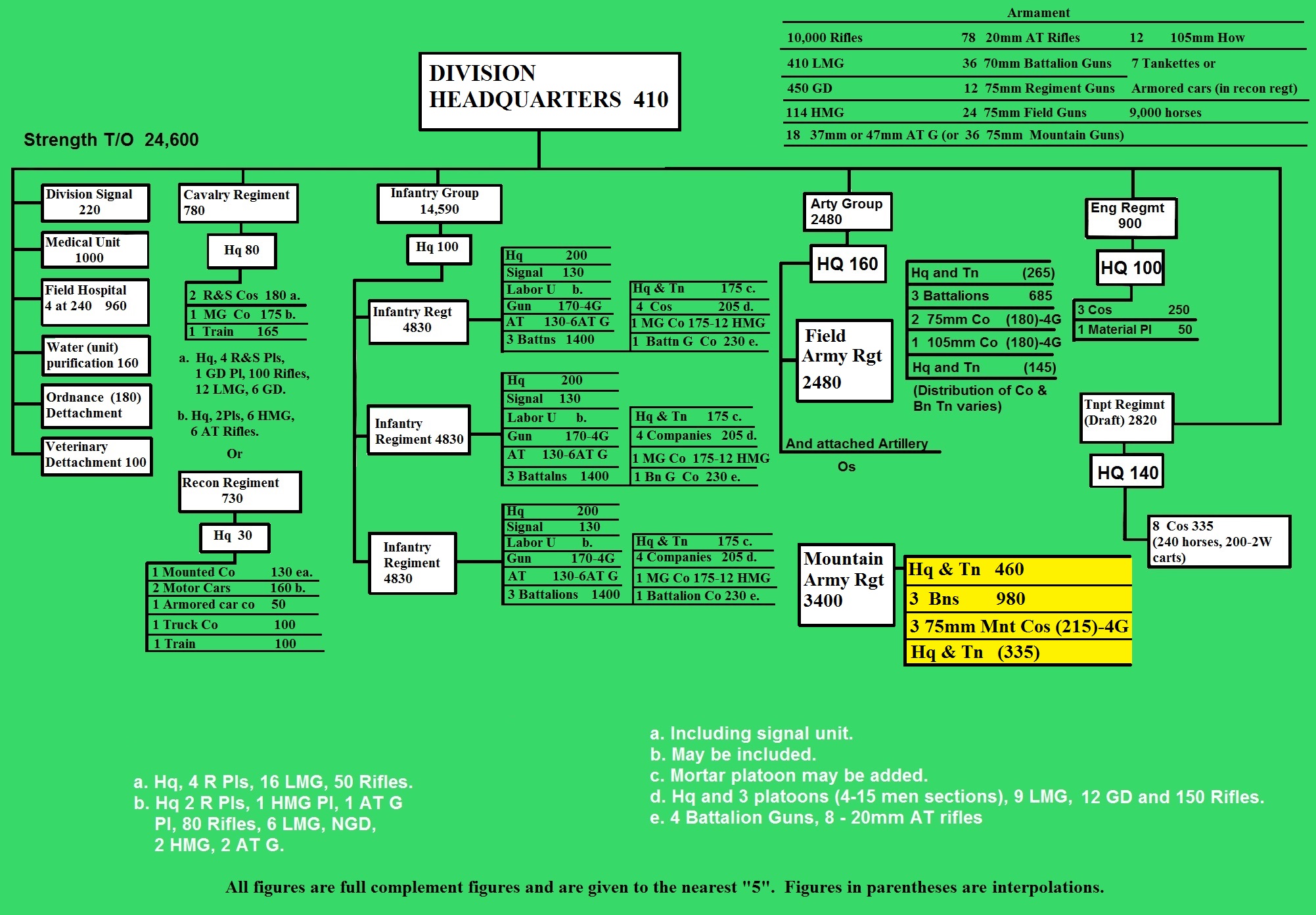
Figure 12. WWII Japanese "strengthened" (modified) triangular division chart. |
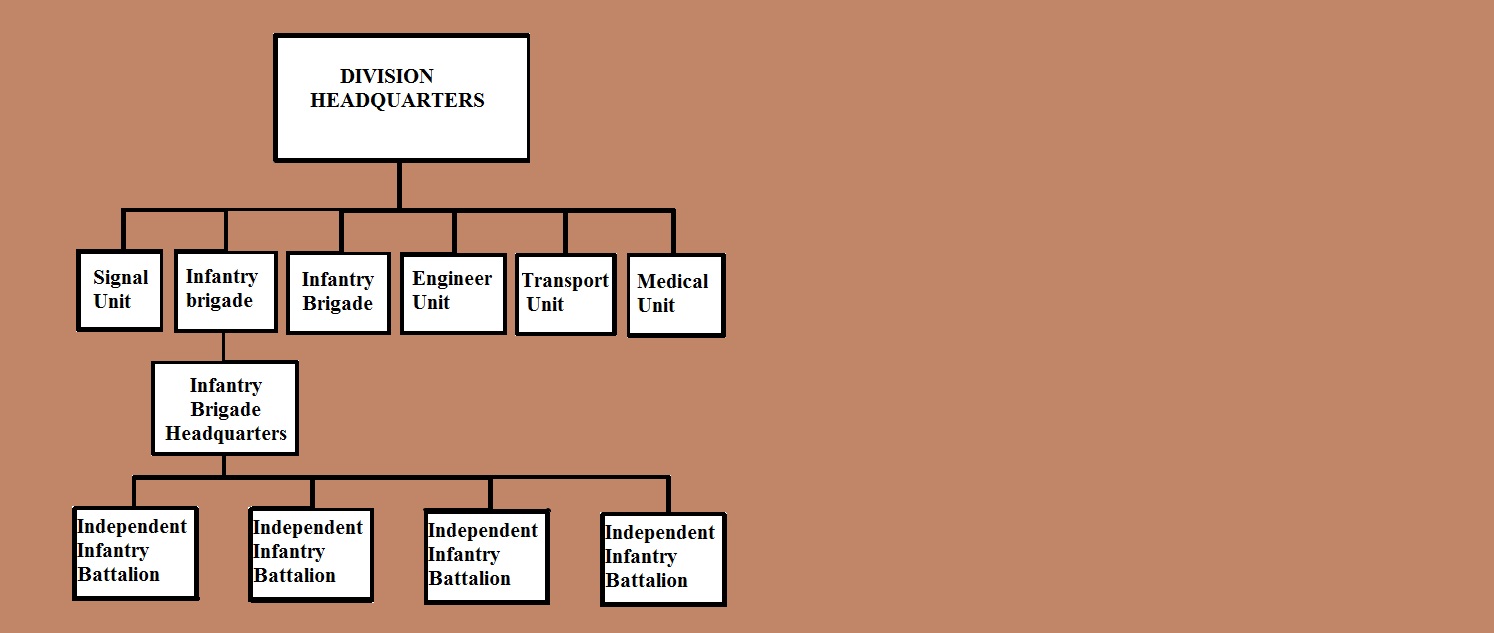
Figure 13. Japanese Special Division. This type of division has been identified in China engaged in garrison and antiguerrilla operations.
| Units | Personnel | Horses | Rifles | LMG | HMG | Grenade discharger |
light mortar |
70-mm Battalion guns |
| Division headquarters | 250 | 160 | 180 | 4 | ----- | ----- | ----- | ----- |
| 2 infantry brigades | 9,500 | 1,000 | 5,600 | 100 | 32 | 100 | 16 | 8 |
| Each | 4,750 | 500 | 2,800 | 50 | 16 | 50 | 8 | 4 |
| Signal unit | 200 | 30 | 70 | ----- | ----- | ----- | ----- | ----- |
| Engineer unit | 600 | 100 | 500 | 6 | ----- | 12 | ----- | ----- |
| Transport unit | 1,800 | 1,290 | 500 | ----- | ----- | ----- | ----- | ----- |
| Medical unit | 650 | 80 | 100 | ----- | ----- | ----- | ----- | ----- |
| Total | 13,000 | 2,660 | 6,950 | 110 | 32 | 112 | 16 | 8 |
Figure 14. Strength and weapons of Special Division (all figures are estimates as of 1944).
| Units | T/O | Operational | Horses | Rifles | LMG | Grenade dischargers |
HMG | Machine cannon or 20mm anti-tank rifle |
37-mm or 47mm antitank gun |
70-mm Battalion guns |
75-mm Regimental guns | 75-mm fld or mtn guns | Tankette or armored car |
| Division headquarters | 300 | 300 | (160) | (180) | (4) | ( ) | ----- | ----- | ----- | ----- | ----- | ----- | ----- |
| Division signal unit | 250 | 220 | 40 | (100) | ----- | ( ) | ----- | ----- | ----- | ----- | ----- | ----- | ----- |
| Infantry group headquarters | 71 | 70 | 18 | ( ) | ( ) | ----- | ----- | ----- | ----- | ----- | ----- | ----- | ----- |
| 3 infantry regiments, Each 3,843 | 11,529 | 9,000 | 2,130 | 6,393 | (336) | 324 | 108(72) | ----- | 18 | 18 | 12 | ----- | ----- |
| Division field artillery regiment | 2,300 | 2,000 | (450) | (1) | ----- | ----- | ----- | ----- | ----- | ----- | ----- | 36 | ----- |
| Division reconnaissance regiment | 730 | 650 | (188) | (200) | 28 | 16 | 4 | ----- | 4 | ----- | ----- | ----- | 7 |
| Division Engineer regiment | 900 | 750 | (150) | (700) | (9) | ----- | ----- | ----- | ----- | ----- | ----- | ----- | ----- |
| Division medical unit | 900 | 750 | (110) | ( ) | ( ) | ----- | ----- | ----- | ----- | ----- | ----- | ----- | ----- |
| 4 field hospitals (operational 3) | 1,000 | 690 | ( ) | ( ) | ( ) | ----- | ----- | ----- | ----- | ----- | ----- | ----- | ----- |
| Division water purification unit | 120 | 90 | ( ) | ( ) | ( ) | ----- | ----- | ----- | ----- | ----- | ----- | ----- | ----- |
| Division transport regiment | 1,800 | 1,400 | (1,300) | ( ) | ( ) | ----- | ----- | ----- | ----- | ----- | ----- | ----- | ----- |
| Division ordnance unit | 50 | 40 | ( ) | ( ) | ----- | ----- | ----- | ----- | ----- | ----- | ----- | ----- | ----- |
| Division veterinary unit | 50 | 40 | ( ) | ( ) | ----- | ----- | ----- | ----- | ----- | ----- | ----- | ----- | ----- |
| Total | 20,000 | 16,000 | (7,500) | (9,000) | (382) | (340) | 112 (76) | ----- | 22 | 18 | 12 | 36 | 7 |
| |
|||||||||||||
| Alternatives: | |||||||||||||
| Division mountain artillery regiment | 3,400 | ----- | (1,400) | (450) | (1) | ----- | ----- | ----- | ----- | ----- | ----- | 36 | ----- |
| Division cavalry regiment | 950 | 900 | (1,100) | (500) | 28 | 18 | 10 | 4 | 2 | ----- | ----- | ----- | ----- |
| Infantry group tankette unit | 100 | ----- | ----- | ( ) | ( ) | ( ) | ( ) | ----- | ----- | ----- | ----- | ----- | 10-17 |
| |
NOTES:
1. Figures in parentheses are interpolations.
2. Parentheses only indicate presence but insuficient evidence is available to estimate a figure.
3. The figure of 72 heavy machine guns shown in brackets for the three infantry regiments assumes the presence of the 8-gun company.
Figure 15. Strength and weapons of standard division.
| Units | Personnel | Horses | Motor vehicles | Rifles | LMG | Grenade dischargers |
HMG | Machine cannon or 20mm anti-tank rifle |
37-mm or 47mm antitank gun |
70-mm Battalion guns |
75-mm Regtl guns | 75-mm fld or mtn guns | 105-mm howitzers |
150-mm howitzers |
Light Tanks | Medium Tanks | Tankette or armored car |
| Division headquarters | 465 | 66 | 23 | ( ) | ( ) | ----- | ----- | ----- | ----- | ----- | ----- | ----- | ----- | ----- | ----- | ----- | ----- |
| Division signal unit | 287 | 48 | ( ) | (120) | ----- | ----- | ----- | ----- | ----- | ----- | ----- | ----- | ----- | ----- | ----- | ----- | ----- |
| Infantry group headquarters | 69 | 18 | 3 | ( ) | ( ) | ----- | ----- | ----- | ----- | ----- | ----- | ----- | ----- | ----- | ----- | ----- | ----- |
| Infantry group signal unit | 114 | 24 | ----- | ( ) | ( ) | ----- | ----- | ----- | ----- | ----- | ----- | ----- | ----- | ----- | ----- | ----- | ----- |
| 3 infantry regiments, each 5,687 | 17,061 | 3,240 | ----- | 7,110 | 345 | 441 | 108 | 72 | 36 | 36 | 24 | ----- | ----- | ----- | ----- | ----- | ----- |
| Artillery group headquarters | 159 | 99 | 6 | ( ) | ( ) | ----- | ----- | ----- | ----- | ----- | ----- | ----- | ----- | ----- | ----- | ----- | ----- |
| Field artillery regiment | 2,379 | 2,463 | 49 | ( ) | ( ) | ----- | ----- | ----- | ----- | ----- | ----- | 12 | 24 | ----- | ----- | ----- | ----- |
| Medium artillery battalion | 951 | 769 | ( ) | ( ) | ( ) | ----- | ----- | ----- | ----- | ----- | ----- | ----- | ----- | 12 | ----- | ----- | ----- |
| Division reconnaissance regiment | 730 | 188 | 61 | 260 | 28 | 16 | 4 | ----- | 4 | ----- | ----- | ----- | ----- | ----- | ----- | ----- | 7 |
| Division tank unit | 717 | ----- | 81 | ( ) | ( ) | ( ) | ----- | ----- | ----- | ----- | ----- | ----- | ----- | ----- | 20 | 48 | ----- |
| Division engineer regiment | 1.012 | 116 | 12 | (800) | (9) | ----- | ----- | ----- | ----- | ----- | ----- | ----- | ----- | ----- | ----- | ----- | ----- |
| Division medical unit | 1,083 | 1,468 | ----- | ( ) | ( ) | ----- | ----- | ----- | ----- | ----- | ----- | ----- | ----- | ----- | ----- | ----- | ----- |
| 5 field hospitals | 1,009 | 145 | 22 | ( ) | ( ) | ----- | ----- | ----- | ----- | ----- | ----- | ----- | ----- | ----- | ----- | ----- | ----- |
| Division water purification unit | 163 | ----- | 19 | ( ) | ----- | ----- | ----- | ----- | ----- | ----- | ----- | ----- | ----- | ----- | ----- | ----- | ----- |
| Division transport regiment | 2,729 | 1,222 | 176 | ( ) | (21) | ----- | ----- | ----- | ----- | ----- | ----- | ----- | ----- | ----- | ----- | ----- | 6 |
| Division ordnance unit | 185 | ----- | 14 | ( ) | ----- | ----- | ----- | ----- | ----- | ----- | ----- | ----- | ----- | ----- | ----- | ----- | ----- |
| Division veterinary unit | 105 | 32 | 6 | ( ) | ----- | ----- | ----- | ----- | ----- | ----- | ----- | ----- | ----- | ----- | ----- | ----- | ----- |
| Chemical (decontamination) unit | 190 | ----- | 30 | ( ) | ( ) | ----- | ----- | ----- | ----- | ----- | ----- | ----- | ----- | ----- | ----- | ----- | ----- |
| Total | 29,408 | 9,906 | 502 | (10,000) | (405) | (4567) | 112 | 72 | 40 | 36 | 24 | 12 | 24 | 12 | 20 | 48 | 13 |
| |
|||||||||||||||||
| Alternatives: | |||||||||||||||||
| Division mountain artillery regiment | 3,420 | 1,835 | ----- | ( ) | ( ) | ----- | ----- | ----- | ----- | ----- | ----- | 24 | 12 | ----- | ----- | ----- | ----- |
| Division cavalry regiment | 950 | 1,100 | ----- | (500) | 28 | 18 | 10 | 4 | 2 | ----- | ----- | ----- | ----- | ----- | ----- | ----- | ----- |
| Infantry group tankette unit | 100 | ----- | ----- | ( ) | ( ) | ( ) | ( ) | ----- | ----- | ----- | ----- | ----- | ----- | ----- | ----- | ----- | 10-17 |
NOTES:
1. Figures in parentheses are interpolations.
2. Parentheses only indicate presence but insufficient evidence is available to estimate a figure,
3. This division is described as from Japanese sources.
Figure 16. Strength and weapons of "strengthened" division.
| Units | Personnel | Horses | Motor vehicles | Rifles | LMG | Grenade dischargers |
HMG | Machine cannon or 20mm anti-tank rifle |
37-mm or 47mm antitank gun |
70-mm Battalion guns |
75-mm Regtl guns | 75-mm fld or mtn guns | 105-mm howitzers |
Tankette or armored car |
| Division headquarters | 415 | 217 | (20) | ( ) | ( ) | ----- | ----- | ----- | ----- | ----- | ----- | ----- | ----- | ----- |
| Division signal unit | 220 | 38 | (20) | (100) | (4) | ----- | ----- | ----- | ----- | ----- | ----- | ----- | ----- | ----- |
| Infantry group headquarters | 48 | 11 | (5) | ( ) | (3) | ----- | ----- | ----- | ----- | ----- | ----- | ----- | ----- | ----- |
| Infantry group signal unit | 14,493 | 2,268 | ----- | (7,110) | (345) | 441 | 108 | 72 | 18 | 36 | 12 | ----- | ----- | ----- |
| 3 infantry regiments | 160 | 94 | (10) | ( ) | ( ) | ----- | ----- | ----- | ----- | ----- | ----- | ----- | ----- | ----- |
| Artillery group headquarters | 2,315 | 1,834 | (30) | (400) | ( ) | ----- | ----- | ----- | ----- | ----- | ----- | 24 | 12 | ----- |
| Field artillery regiment | 783 | 831 | ----- | (300) | 25 | 12 | 6 | 6 | ----- | ----- | ----- | 24 | 12 | ----- |
| Division cavalry regiment | 783 | 831 | ----- | (300) | 25 | 12 | 6 | 6 | ----- | ----- | ----- | ----- | ----- | ----- |
| Division engineer regiment | 899 | 150 | (15) | (700) | (9) | ----- | ----- | ----- | ----- | ----- | ----- | ----- | ----- | ----- |
| Division medical unit | 995 | 117 | (15) | ( ) | ( ) | ----- | ----- | ----- | ----- | ----- | ----- | ----- | ----- | ----- |
| 4 field hospitals | 948 | 304 | ( ) | ( ) | ----- | ----- | ----- | ----- | ----- | ----- | ----- | ----- | ----- | ----- |
| Division water purification unit | 163 | ----- | (19) | ( ) | ----- | ----- | ----- | ----- | ----- | ----- | ----- | ----- | ----- | ----- |
| Division transport regiment | 2,819 | 2,025 | (135) | (930) | (24) | ----- | ----- | ----- | ----- | ----- | ----- | ----- | ----- | (6) |
| Division ordnance unit | 185 | ----- | (15) | ( ) | ----- | ----- | ----- | ----- | ----- | ----- | ----- | ----- | ----- | ----- |
| Division veterinary unit | 105 | 30 | ( ) | ( ) | ----- | ----- | ----- | ----- | ----- | ----- | ----- | ----- | ----- | ----- |
| Total | 24,600 | 7,930 | (284) | (10,000) | (411) | 453 | 114 | 78 | 18 | 36 | 12 | 24 | 12 | (6) |
| |
||||||||||||||
| Alternatives: | ||||||||||||||
| |
||||||||||||||
| Mountain artillery regiment | 3,441 | 1,822 | ----- | ----- | ----- | ----- | ----- | ----- | ----- | ----- | ----- | 35 | ----- | ----- |
Figure 17. Strength and weapons of "strengthened" (modified) division.
NOTES:
1. Figured in parenthesis are interpolations.
2. Parentheses only indicate presence but insufficient evidence is available to estimate a figure,
3. This division is described as from the Japanese sources.
d. Identified Japanese divisions and their principal components.
(1) The following chart shows the identified divisions of the Japanese Army, their component units, the district from which they are conscripted, and the location of the depots from which they are supplied. Division signal and medical units, although included in the divisions, are not shown on the chart.
(2) The area from which an identified regiment is conscripted is the regimental conscription district. When the location of its depot differs from the headquarters of the conscription district, the depot location is shown in parentheses. The supporting units are conscripted from the whole divisional district. When the location of the depot differs from the headquarters of the divisional district, the depot location also is shown in parentheses.
As of May 1944
| Num | Divisions | Regimental conscription district and/or location of depot | Div inf regt | Div cav or recon unit | Div tank unit | Div arty regt | Div arty group | Div engr regt | Div inot regt | ||||||
| 1 | Gds | ----- |
1 Gds 2 Gds B 7 Gds |
1 Gds cav (Tokyo) | ----- | 1 Gds FA | ----- | 1 Gds | 1 Gds | ||||||
| 2 | Gds Tokyo |
|
|
2 Gd Recn (Tokyo) | ----- | 2 Gds FA of the arty group (Tokyo) | Gds | 2 Gds (Tokyo) | 2 Gds (Tokyo) | ||||||
| 1 | Tokyo |
|
1 49 57 |
1 Reen Tokyo | 1 | 1 FA of the arty group Tokyo | 1 | 1 Tokyo | 1 Tokyo | ||||||
| 2 | Sendai |
|
4 16 29 |
2 Recon Sendai | ----- | 2 FA of the arty group Sendai | 2 | 2 Sendai | 2 Sendai | ||||||
| 3 | Nagoya |
|
6 34 68 |
3 Cav nagoya | ----- | 3 FA of the arty group Nagoya | 3 | 3 Nagoya (Tokyo-hashi) | 3 Nagoya | ||||||
| 4 | Osaka |
|
8 37 61 |
4 Reen Osaka | ----- | 4 FA Osaka (Shinoda-Yuma) | ----- | 4 Osaka (Takatsuki) | 4 Osaka | ||||||
| 5 | Hiroshima |
|
11 21 42 |
5 Reen Hiroshima | ----- | 5 FA Hiroshima | ----- | 5 Hiroshima | 5 Hiroshima | ||||||
| 6 | Kumamoto |
|
13 23 45 |
6 Cav Kumamoto | ----- | 6 FA Kumamoto | ----- | 6 Kumamoto | 6 Kumamoto | ||||||
| 7 | Asahigawa |
|
26 27 28 |
7 Reen Asahigawa | ----- | 7 Mountain Asahigawa | ----- | 7 Asahigawa | 7 Asahigawa | ||||||
| 8 | Hirosaki |
|
5 17 31 |
8 Reen Hirosaki | 8 (Co) | 8 FA of the Arty Group Hirosaki | 8 | 8 Hirosaki (Morioka) | 8 Hirosaki | ||||||
| 9 | Kanazawa |
|
7 19 35 |
9 Cav Kanazawa | ----- | 9 Mtn of the Arty Group Kanazawa | 9 | 9 Kanazawa | 9 Kanazawa | ||||||
| 10 | Himeji |
|
10 39 63 |
10 Reem Himeji | ----- | 10 FA of the Arty group Himeji | 10 | 10 Himeji (Okayama) | 10 Himeji | ||||||
| 11 | Zentsuji |
|
12 43 44 |
11 Cav Zentsuji | ----- | 11 Mtn of the Arty group Zentsuji | 11 | 11 Zentsuji | 11 Zentsuji | ||||||
| 12 | Kurume |
|
24 46 48 |
12 Reem Kurume | 12 | 24 FA of the Arty group Kurume | 12 | 18 Kurume | 18 Kurume | ||||||
| 13 | Sendai |
|
116 65 104 |
13 Div Cav unit (Sendai) | ----- | 19 Mtn Sendai (Takata) | ----- | 13 Sendai | 13 Sendai | ||||||
| 14 | Utsunomiya |
|
2 15 59 |
14 Reen Utsu | ----- | 20 FA Utsu | ----- | 14 Utsu (Mito) | 14 Utsu | ||||||
| 15 | Nagoya? Kyoto | Tsu | 51 60 67 |
----- | 15 | 21 FA | ----- | 15 | 15 | ||||||
| 16 | Kyoto |
|
9 20 33 |
16 Reen Kyoto | ----- | 22 FA Kyoto | ----- | 16 Kyoto (Fushimi) | 16 Kyoto | ||||||
| 17 | Himeji |
|
53 54 81 |
17 Inf group tkette Co | ----- | 23 FA Hineji | ----- | 17 Himeji (Okayama) | 17 Himeji | ||||||
| 18 | Kurume |
|
55 56 B |
22 Cav Bn? | ----- | 18 Mtn Kurume | ----- | 12 Kurume | 12 Kurume | ||||||
| 19 | Ranan |
|
73 75 76 |
19 Reem | ----- | 25 Mtn of the Arty Group (Ranan) | 19 | 19 (Kainei) | 19 (Ranan) | ||||||
| 20 | Keijo |
|
78 BR> 79 80 |
20 Reen (Ryuzan) | ----- | 26 FA of the Arty group (Ryuzan) | 20 | 20 (Ryuzan) | 20 (Ryuzan) | ||||||
| 21 | Kanazawa | ----- | 62 82 83 |
21 Div Tkette Co | ----- | 51 Mountain | ----- | 21 | 21 | ||||||
| 22 | Utsunomiya Kanasawa? |
|
84 85 86 |
22 Inf group Tkette co Utsu | ----- | 52 Mountain Utsu | ----- | 22 Mito? | 22 Utsu | ||||||
| 23 | ----- | ----- | 64 71 72 |
23 Reen | 23 | 13 FA of the Arty group | 23 | 23 | 23 | ||||||
| 24 | Zentsuji, Hirosaki |
|
22 32 89 |
24 Reen | ----- | 42 FA of the Arty group | 24 | 24 | 24 | ||||||
| 25 | Osaka, Himeji, Kurume |
|
14 40 70 |
75 cav | ----- | 15 Mtn of the Arty group | 25 | 25 | 25 | ||||||
| 26 | Nagoya? |
|
Ind 12 Ind 13 Ind |
26 Reen | ----- | 11 Ind FA Nagoya? | ---- | 26 | 26 |
7. DIVISION HEADQUARTERS.
a. General.
A division is commanded by a lieutenant general, with a colonel of the General Staff as Chief of Staff. The staff is in two sections - The General Staff section and the administrative section. To the staff are attached five departmental sections (See d below) and ordnance, a signal and a veterenary detachment. In all, there are about 300 officers and enlisted men.
d. Depatmental section. the number of officers employed in each special staff section varies with divisions. The services represented are as follows:
(1) Intendance. A colonel, three field officers, and seven or more capatins or lieutenants.
(2) Medical. A colonel and two or three other medical officers.
(3) Veterenary. A lieutenant colonel and one or two other veterinary officers.
(4) Ordnance. One field officer and two or more captains or lieutenants from the technical service.
(5) Judicial (legal). Several officers.
e. Detachments. The ordnance, signal, veterenary, and guard detachments, together with the drivers of vehicles used to transport the division staff and part of its equipment, make up the rest of the headquarters.
